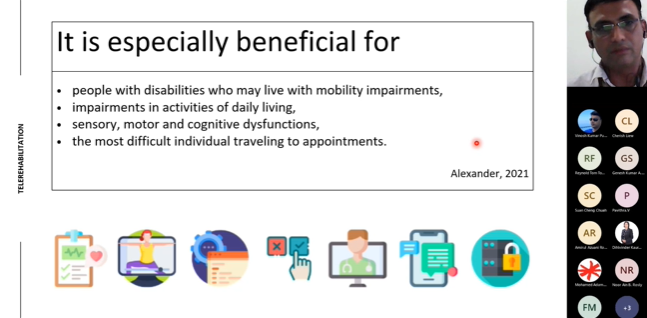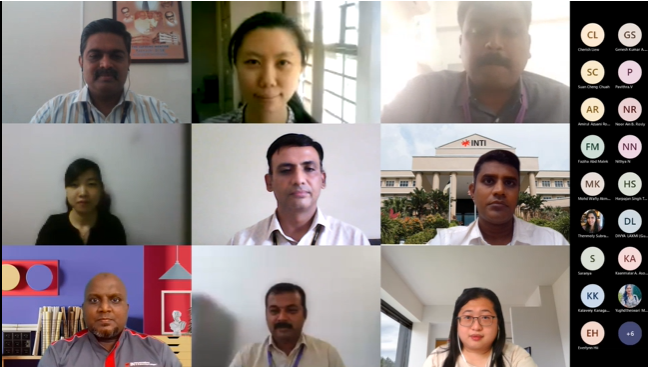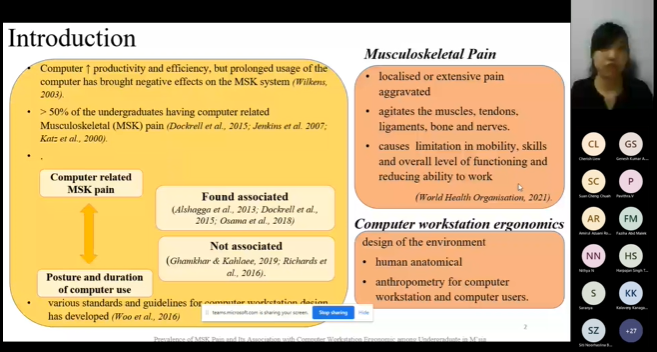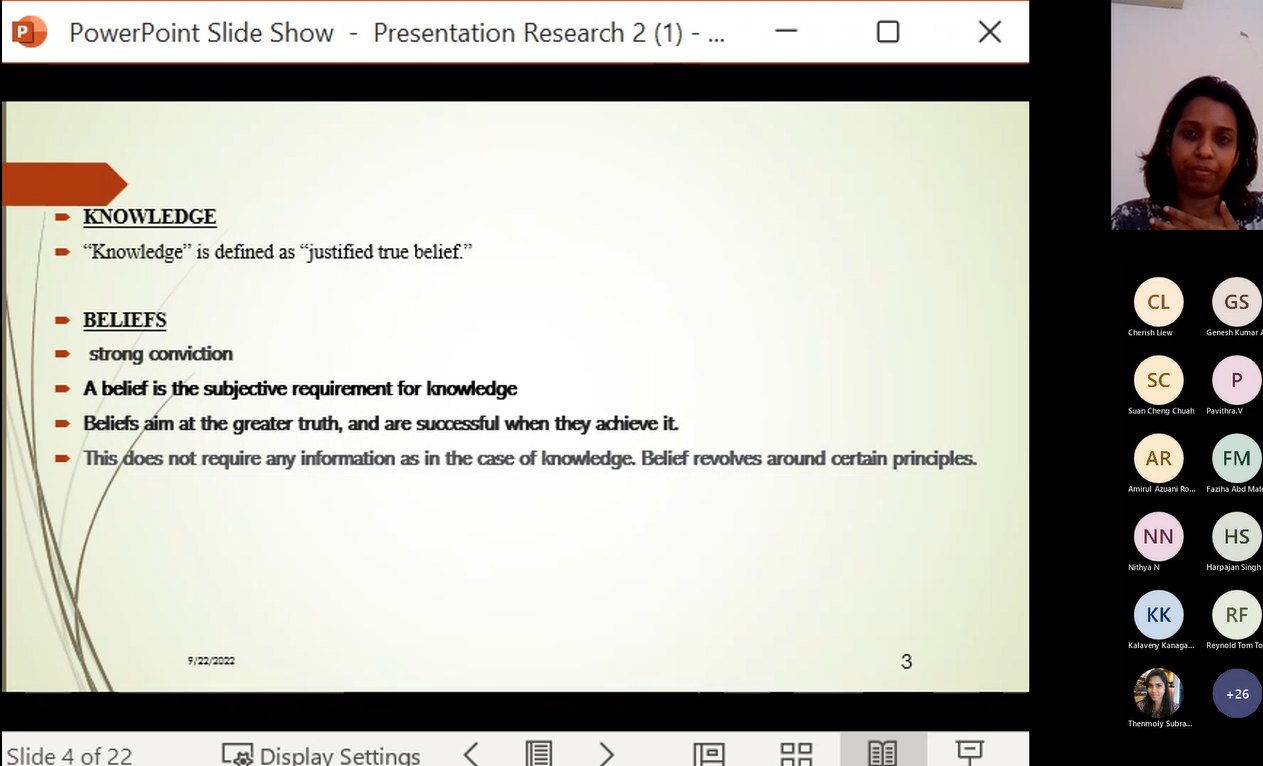INTI International University hosted the 5th International Conference on Innovation and Technopreneurship (ICIT) recently which welcomed researchers and experts who presented the latest findings on innovation development and technopreneurship.
In line with this year’s theme, Embracing Transformation and Innovation towards Sustainable Development Goals (SDG), the conference featured 10 tracks including Heath Science. The Health Science track featured speakers who discussed multiple interventions, especially in the field of physiotherapy.
Dr. Naresh Bhaskar Raj, a senior lecturer at Universiti Sultan Zainal Abidin in Kuala Terengganu, Malaysia, presented his findings on ‘Physiotherapy in Telerehabilitation’.
“Telerehabilitation has been considered a suitable alternative healthcare delivery system during the COVID-19 outbreak, and many studies have promoted its feasibility in delivering physical care to patients who live with pain and disability. The perception of and willingness of physiotherapists are two key factors that influence the provision of remote physiotherapy,” shared Dr. Naresh.
Speaking about the delivery of the services, Dr. Naresh elaborated that specific to physiotherapy home exercise programmes, smartphone applications provide a newer way of delivering physiotherapy that promotes active participation from both the physiotherapist and patient throughout the course of treatment.
According to him, early research on telerehabilitation was introduced with small pilot studies. In some of the projects, clinicians used the telephone to follow up and administer self-assessment measures. From this, telerehabilitation continued to progress into the 1980s with pre-recorded video materials for clients’ use and interaction.
He said, “Eventually, live interactive video conferencing was introduced. The potential uses for video conferencing in healthcare and telerehabilitation became apparent in the 1990s with many projects being conducted in physiotherapy. In a randomised control trial by a group of researchers, the efficacy of this internet-based telerehabilitation system was assessed versus conventional physiotherapy in the provision of outpatient rehabilitation to patients who had received total knee replacement. Comparable results were reported with the two rehabilitation methods and patients were satisfied with the telerehabilitation treatment provided.”
Through Dr. Naresh’s findings, it is evident that telerehabilitation is effective for osteoarthritis and other chronic joint pain conditions, joint replacement surgeries, patients requiring cardiac and pulmonary rehabilitation. He said patients with musculoskeletal problems could also be assessed by physiotherapists safely and appropriately through videoconferencing.
The Health Science track also showcased the results of another research titled ‘Can We Really Prevent Osteoarthritis?’ by Dr. Manoj Abraham from the KG College of Physiotherapy, Coimbatore, India.
His research revealed that it is not possible to prevent osteoarthritis altogether, but it can be minimized by avoiding injury and living a healthy lifestyle.
“Avoid exercises that strain the joints and force them to bear an excessive load, such as running and weight training. Instead, try exercises such as swimming and cycling where the strain on your joints is more controlled. To keep ourselves healthy, we should try to do at least 150 minutes of moderate aerobic activity such as cycling or fast walking every week, plus strength exercises for two or more days each week to work the major muscle groups,” said Dr. Manoj.
Meanwhile, maintaining good posture when sitting can help prevent osteoarthritis.
“A patient with osteoarthritis must avoid staying in the same position for too long. If you work at a desk, make sure your chair is at the correct height, and take regular breaks to move around. Being overweight or obese increases the strain on your joints and your risk of developing osteoarthritis. If you are overweight, losing weight may help lower your chances of developing the condition or worsening it,” shared Dr. Manoj.
He said while there is no cure for osteoarthritis, there are many ways to prevent, relieve, and manage its symptoms. Maintaining a healthy lifestyle with low-impact exercise, getting plenty of rest and enough sleep, and maintaining a healthy diet are simple ways you can reduce and manage osteoarthritis symptoms.
Another interesting topic presented during the track was ‘Prevalence of Musculoskeletal Pain and its Association with Computer Workstation Ergonomics Among Undergraduates in Malaysia’ by INTI International University student Kong Yi Ling.
“It is observed that regular usage of digital gadgets among undergraduates resulted in problems associated with musculoskeletal disorder and pain. The pain is caused by injuries that affect human body movements and the musculoskeletal system which includes bones, cartilage, tendons, ligaments, andhese are major health issues for people in developed and developing countries including Malaysia,” Yi Ling said.
University students use computers daily and this exposes them to ergonomic risk factors due to sitting down for prolonged periods, working in awkward positions, or even performing repetitive manual tasks. Therefore, a musculoskeletal pain and disorder assessment is important to determine the risk level experienced. According to Yi Ling, in the last two decades, a dramatic growth of computer use was seen in the last two decades and has resulted in some adverse effects, including musculoskeletal disorder.
Ending her presentation, she said, “Based on the assessment conducted, there is a need to have ergonomic interventions such as workstation redesigning and ergonomic training for undergraduates. Suggested recommendations to reduce ergonomic risk includes changing normal keyboards to ergonomic keyboards to reduce stress on the wrist and installing screen protectors to reduce glare and eye sore. These adjustments will decrease neck and shoulder pain among undergraduates who are constantly utilizing their laptops for online learning and completing assignments.”
Geetha Anbalagan, a lecturer at INTI International University, presented her research paper titled ‘Malaysian Physiotherapists’ Knowledge, Attitude, Beliefs and Experience in Palliative Care.’
Her research showed that considering the diverse needs of individual patients and their families, a multidisciplinary team approach to palliative care is appropriate, with an emphasis on effective communication amongst all team members, including the patient and family.
“Physiotherapy has a vital role in the palliative care team, to provide symptom management and improving quality of life by optimising independent levels of function. Specific physiotherapy modalities used in palliative care aims to reduce pain, reduce fatigue, dyspnoea, and other respiratory symptoms, decrease spasticity and other neuromuscular problems, strengthen or maintain muscle strength, prevent postural deformities which may impact functional abilities, reduce functional limitations and improve self-sufficiency, self-motivation, social interaction and respiratory functions,” said Geetha.
She further elaborated, “Palliative care rehabilitation has been positively associated with a high and prolonged level of independent function, which also reduces the burden on care providers. As professionals in the field, physiotherapists should have sufficient knowledge, experience, and skills to manage patients with difficult diagnoses at different life stages. Furthermore, in Malaysia, dedicated palliative care units have been developing in hospitals by the Ministry of Health since the mid-1990s. In 2005, the field of Palliative Medicine was recognised as a medical sub-specialty by the Ministry of Health[1].”
Geetha concluded that in helping people with palliative care needs, a physiotherapist is led by the person’s symptoms and their sense of what is important to them to co-create realistic goals and expectations in the face of decline and impending death within the context of a therapeutic relationship.
“The professional will recommend appropriate therapeutic interventions and reassess the person’s changing care needs as their condition changes. On top of that, a physiotherapist will liaise within the care team to promote the best outcomes while providing support, education, and training to informal carers about manual handling within the home context to reduce risk of injury,” she said.

INTI 1: Dr. Naresh Bhaskar Raj, senior lecturer at Universiti Sultan Zainal Abidin, Kuala Terengganu, Malaysia, presenting his findings on ‘Physiotherapy in Telerehabilitation’.

INTI 2: Dr. Manoj Abraham (first row, first from left) from KG College of Physiotherapy, Coimbatore, India, smiling for a group photograph after discussing his research titled ‘Can We Really Prevent Osteoarthritis?’ with the participants.

INTI 3: Kong Yi Ling, a student from INTI International University, sharing her findings on the ‘Prevalence of Musculoskeletal Pain and its Association with Computer Workstation Ergonomics Among Undergraduates in Malaysia’ with participants of the Health Science track.

INTI 4: Geetha Anbalagan, a lecturer at INTI International University, presenting her research paper titled, ‘Malaysian Physiotherapists’ Knowledge, Attitude, Beliefs and Experience in Palliative Care’.